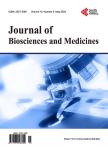Effect of Microfocused Ultrasound on Facial Rejuvenation: Clinical and Histological Evaluation
Effect of Microfocused Ultrasound on Facial Rejuvenation: Clinical and Histological Evaluation作者机构:Federal University of Rio Grande do Norte (UFRN) Natal Brazil University Centre of Rio Grande do Norte (UNI-RN) Natal Brazil Michelle Meleck Advanced Aesthetics Sã o Paulo Brazil Estácio de Sá University Rio de Janeiro Brazil Universidad Finis Terrae Santiago Chile Potiguar University (UNP) Natal Brazil Campinas State University (UNICAMP) Campinas Brazil Fellow da West Virginia University Morgantown USA
出 版 物:《Journal of Biosciences and Medicines》 (生物科学与医学(英文))
年 卷 期:2021年第9卷第7期
页 面:112-125页
学科分类:1002[医学-临床医学] 100214[医学-肿瘤学] 10[医学]
主 题:Skin Aging Mechanical Waves Sagging Wrinkles
摘 要:Introduction: Micro focused ultrasound (MFU) is formed by mechanical waves emitted in a focused manner, concentrating thermal energy on a certain point or region, promoting a clinical improvement in wrinkles. Objective: evaluate the effects of micro focused ultrasound on facial rejuvenation. Methodology: This is an experimental study. The sample consisted of 30 volunteers, who were evaluated before treatment, 45 and 90 days after its beginning. A single application of the MFU was performed across the facial region. The parameters used were: 10 MHz cartridge with depth of 1.5 mm, 7 MHz with depth of 3 mm, and 4 MHz with focal depth of 4.5 mm;doses ranged from 0.1 to 2.0 J, according to the sensitivity of the volunteers treated, and the application time was of approximately 90 minutes. Clinical photographic analysis and facial symmetry analysis using Dolphin Imaging software were performed, and validated questionnaires. Two volunteers were submitted to blepharoplasty surgery, and one to rhytidoplasty surgery 45 days after the application of the MFU. Samples of the treated skin were taken after the surgical procedures and submitted to histological and immunohistochemical analyses. The volunteers answered a questionnaire to assess adverse reactions and satisfaction. Results: We observed a visible clinical improvement on the images by photography, and an improvement of facial symmetry in the measurements of the paralateronasal projection (p = 0.007), left lateral mandibular (p = 0.01), and right lateral mandibular (p = 0.008). The histological analysis showed an increase in the amount of fibroblasts (p = 0.02), blood vessels (p = 0.0062) and inflammatory cells (p = 0.0036), in addition to the production of type 1 collagen. In the immunohistochemical analysis, we observed the presence of the macrophage marker IHQ: CD68, indicating phagocytosis of adipose tissue and the presence of fibrosis. In the analysis of adverse reactions, only transient hyperemia was observed with t



